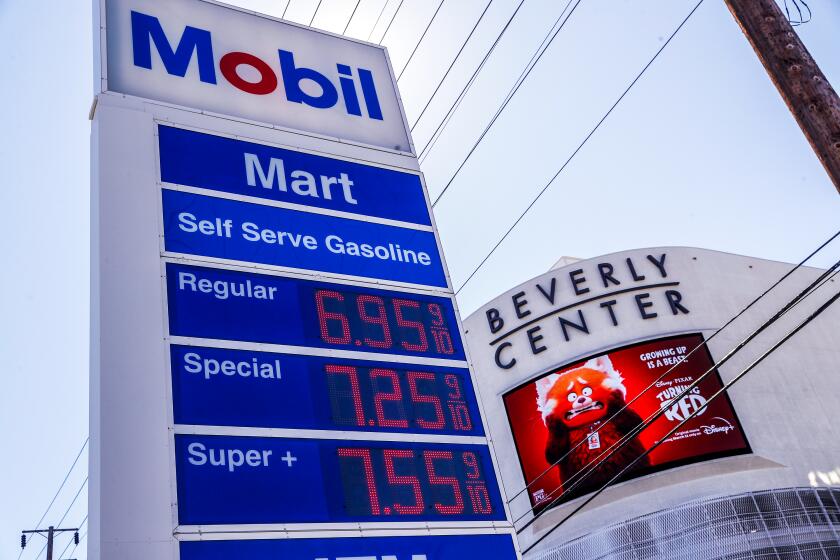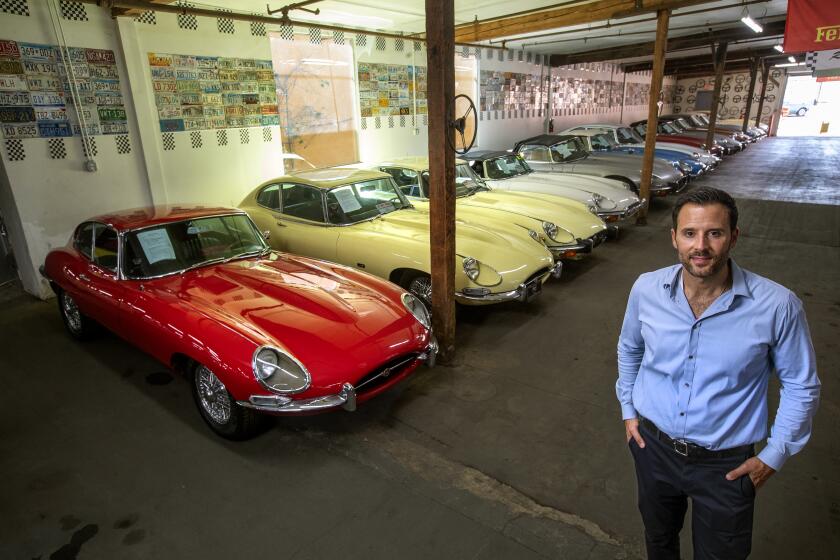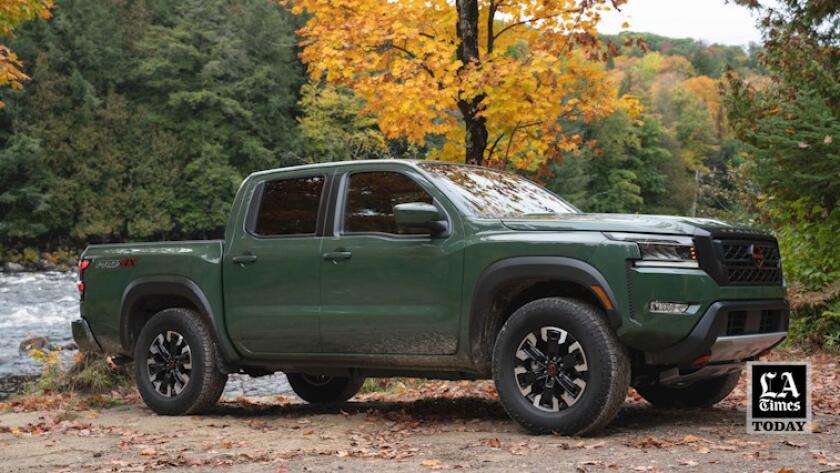What’s happening to the color of L.A. cars? Inside the obsession with muted earth tones
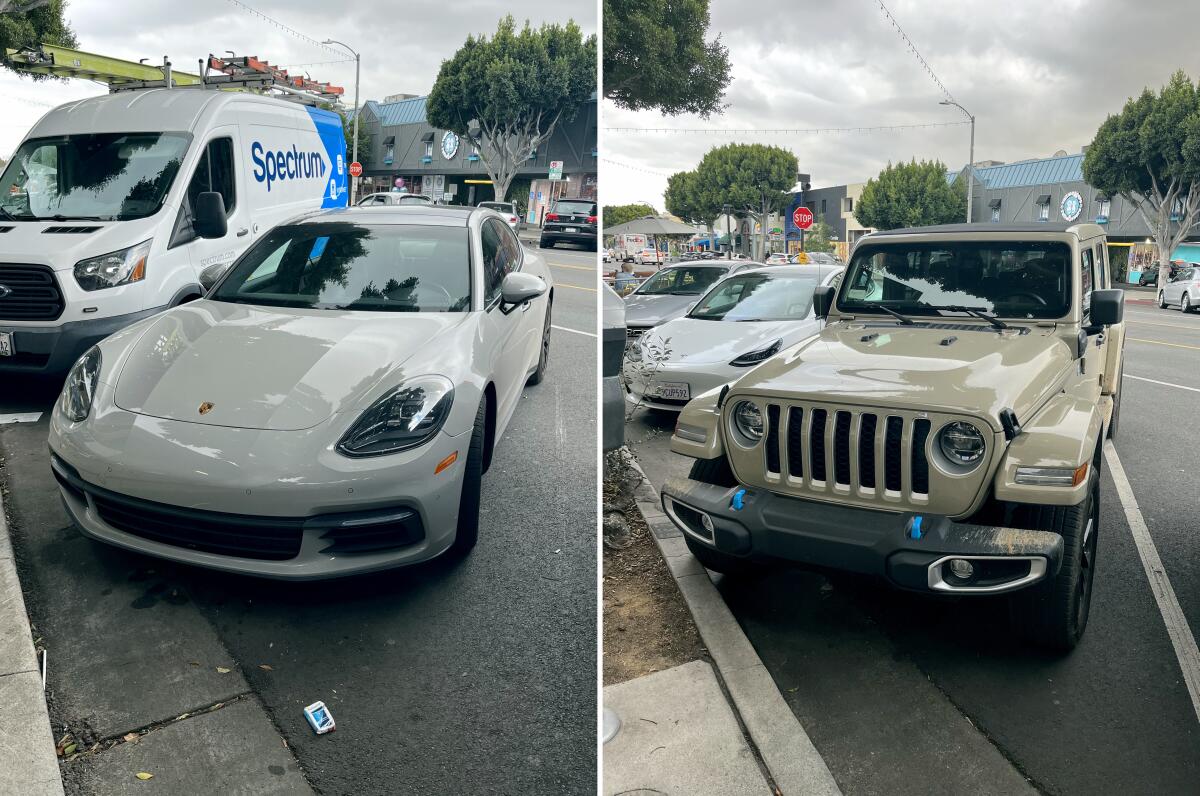
- Share via
Flat. Muddy. Neutral. Desaturated.
Even wet putty.
There are many descriptions for a new style of car paint that has become popular in recent years, but none quite captures the essence of the know-it-when-you-see-it look.
The hues are muted earth tones — grays, tans, browns and others — that lack the light-reflecting metallic flake that is typically mixed in with car paint. And it’s a look that’s gone — over the course of a decade — from rare to near ubiquity in car-obsessed Los Angeles. Companies including Porsche, Jeep, Nissan and Hyundai now offer this sort of paint.
Automakers say these earthy shades convey a sense of adventure — stealthiness even. To some design experts, the colors represent harmony with nature. To other observers, they have a quasi-military feel, reflecting the craze for all things tactical. And car critics see in them the expression of drivers’ contradictory desires — to stand out while also conforming.
“I think the color is calming; I think this color is very soothing,” said Tara Subkoff, an artist and actress with credits including “The Last Days of Disco” who drives a Porsche Panamera painted a subdued gray called Chalk. “When there is so much traffic, and it is literally increasing in the last few months astronomically — and almost unbearably — to have less red and orange is maybe good.”
Want this low-key look? It’ll cost you. Sometimes dearly. The paint colors, which are mostly offered on sports cars and utility vehicles, often command premiums. In some cases, they are merely options that can add a few hundred dollars to an automobile’s price tag. In others, they run $10,000-plus and are reserved for special cars, such as extra-rugged off-roaders or ultra-high-performance two-seaters.
“People are willing to go up a trim level and pay a surcharge for these colors because some cars look best in [them],” said Ivan Drury of Edmunds, the automotive information service, who noted that these colors sometimes are offered for a short period of time, creating a sense of urgency for prospective buyers. “It’s, ‘Hey, if you like this, you better get it now, because you are never going to see it again in this model.’ ”
The trend was kick-started in 2013 by Audi with its debut of the color Nardo Gray on its RS 7, a powerful four-door coupe whose twin-turbocharged V-8 was good for more than 550 horsepower. It was, said Mark Dahncke, Audi of America’s director of communications, the first “solid gray on the market,” referring to paint that lacks sparkle. A few years later, the company offered the color on other speedy RS models.
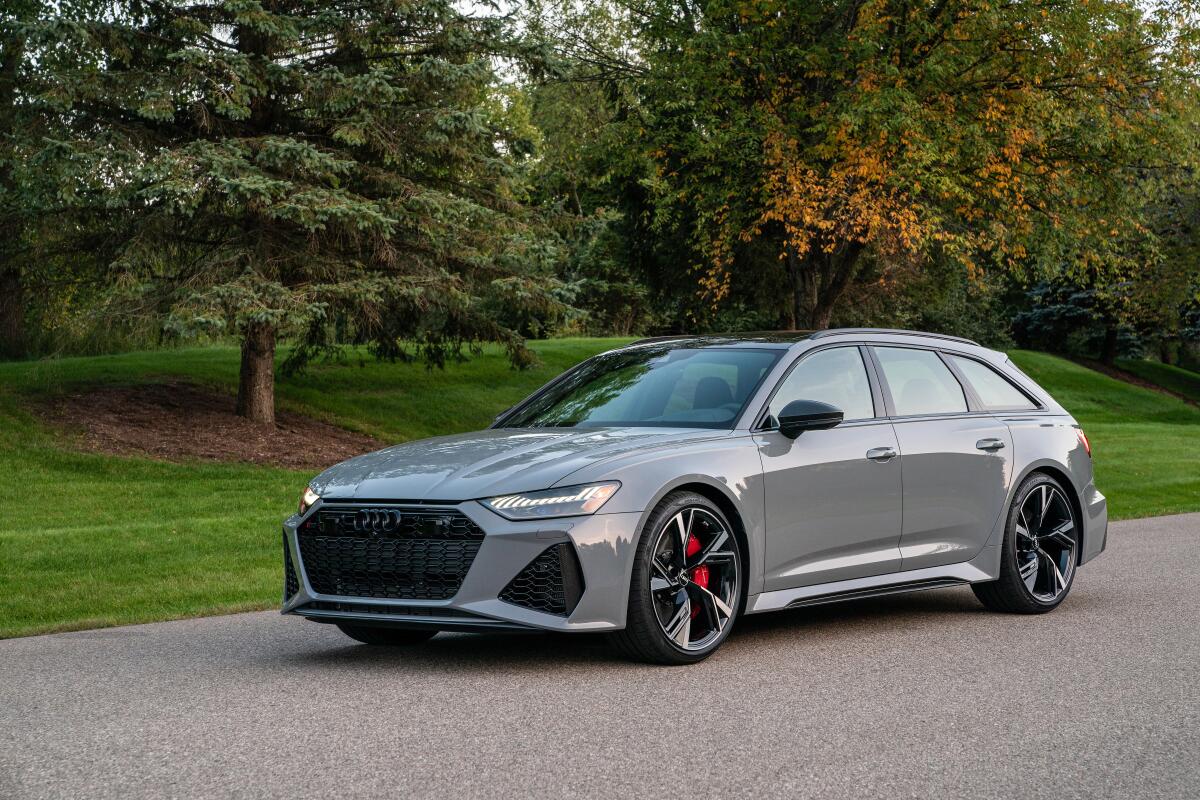
“Audi definitely set a trend during this time,” Dahncke said. “Now solid colors are becoming more and more popular.”
Though these muted hues have been offered by carmakers for a decade, their surge in popularity appears to have largely escaped mainstream media attention. In recent years, the few substantive reports on the style shift have included an article on the website for Capital One — yes, the bank — and an entry in the trend-spotting newsletter Blackbird Spyplane written by Jonah Weiner and Erin Wylie. A 2022 piece in the newsletter by Weiner asked with all-caps urgency: WHAT’S UP WITH ALL THESE PUTTY-LOOKIN’ A** WHIPS??
The essay noted the effect of the “wet putty” paint was “sneaky but striking.”
Vehicles clad in these nonmetallic colors “reflect less light than we’ve become accustomed to seeing over the past several flake-heavy decades, and so they assume a greater visual density than their flaked-out counterparts,” Weiner wrote. “The result is faintly but palpably uncanny.”
You’ve seen the signs advertising $6.95, $6.99 or even $7.05 for a gallon of regular unleaded. But who’s buying it, and why?
Drive around L.A., and it’s apparent these earthy colors are gaining in popularity. On a recent afternoon, Subkoff’s Porsche was parked on Larchmont Boulevard just a few spaces down from a Jeep Wrangler painted a subtle tan known as Gobi (the limited-run paint, which cost an extra $495, is no longer available on the car). But it’s hard to come by figures that quantify the success of these hues, in part because available data about paint colors offer little in the way of specifics. Also, several carmakers declined to disclose pertinent numbers.
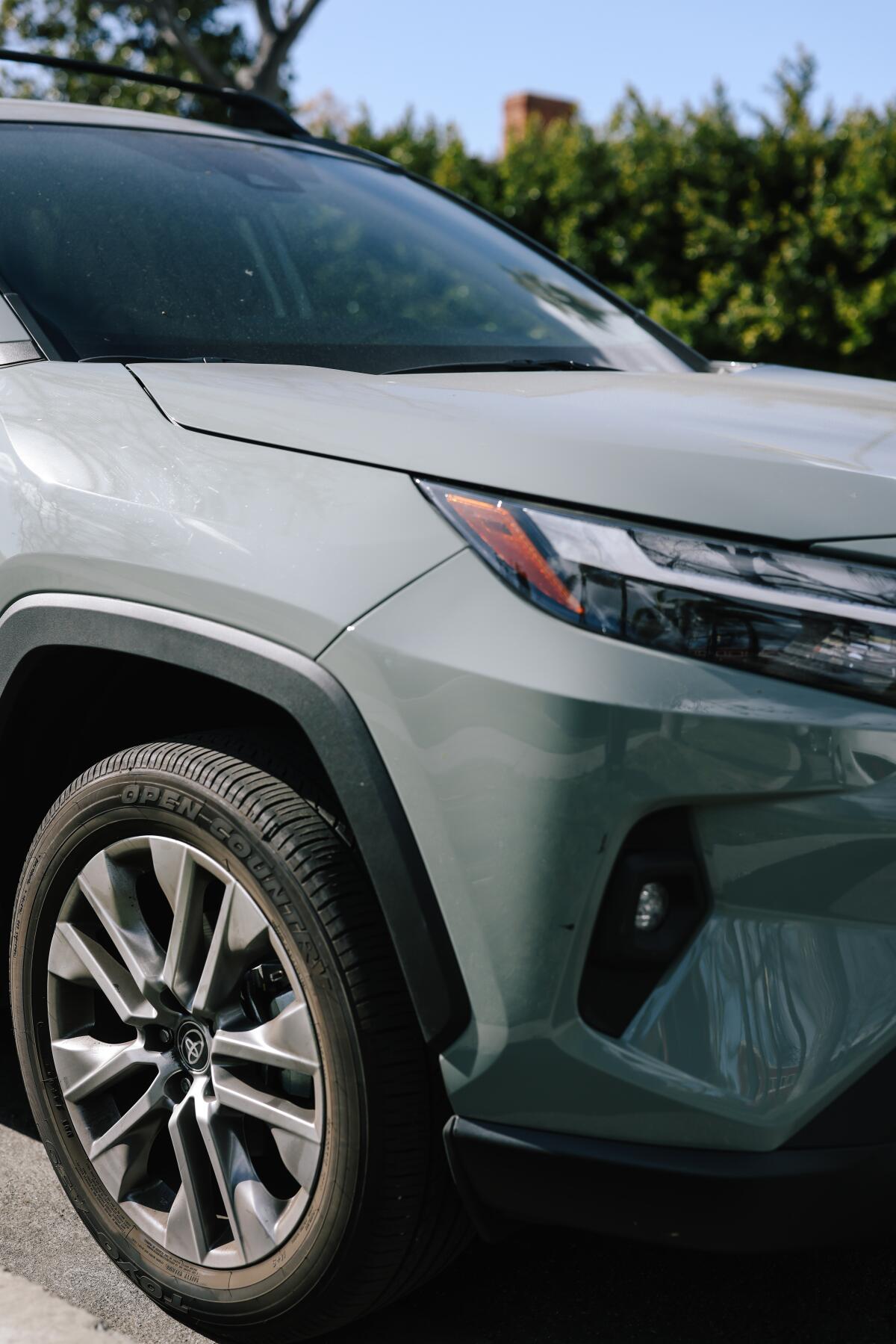
One way to measure success is to look at how quickly vehicles painted certain colors are selling. In the case of the Hyundai Santa Cruz, a four-door truck launched in 2021, two muted earth tones — Blue Stone and Sage Gray — are among the quickest-selling colors of the six that Hyundai offers on the truck, said Derek Joyce, a spokesman for Hyundai Motor North America.
The data that are available support an obvious truth about car colors: Americans have homogeneous tastes. According to Edmunds, vehicles painted various shades of white, gray, black and silver accounted for 75% of new-car sales in the U.S. last year.
So how do you get adventurous with your car color when you’re actually not all that adventurous? You pay extra to lose the sparkle.
Origins of the trend
Ask carmakers, designers and color experts about the origins of the nonmetallic paint trend, and you’ll be inundated with high-concept theories.
Drury, director of insights for Edmunds, believes the earth tones phenomenon may stem from car tuner subculture. In the late 1990s and early 2000s, he said, auto enthusiasts adding body kits and other items to their vehicles’ exteriors would spray them with primer — it comes in white, gray or black — and wait to get a paint job until all their modifications were complete. Some took to the style.
“People just opted to keep them that way,” Drury said.
These primered rides had a matte look that appears to have sparked the fad of so-called “murdered-out” vehicles clad in flat black paint. The look can also be achieved by getting a protective, full-body wrap put on a car — another trend that has grown in the last decade or so.
Beverly Hills Car Club and co-owner Alex Manos have built a following, but lawsuits accuse the dealership of selling vehicles with undisclosed damage, defective parts or other issues.
Drury believes those fads may have “let automakers know that premium paint didn’t always equate to the ones with the most shine [or] sparkle.”
Color designers and executives at automakers pointed to other inspirations.
Dahncke of Audi said that Nardo Gray was born out of a desire for a special color for the company’s line of high-performance RS vehicles.
“The color should emphasize the sporty character of the cars and highlight the self-confident stance on the road, but at the same time still be pure,” he said.
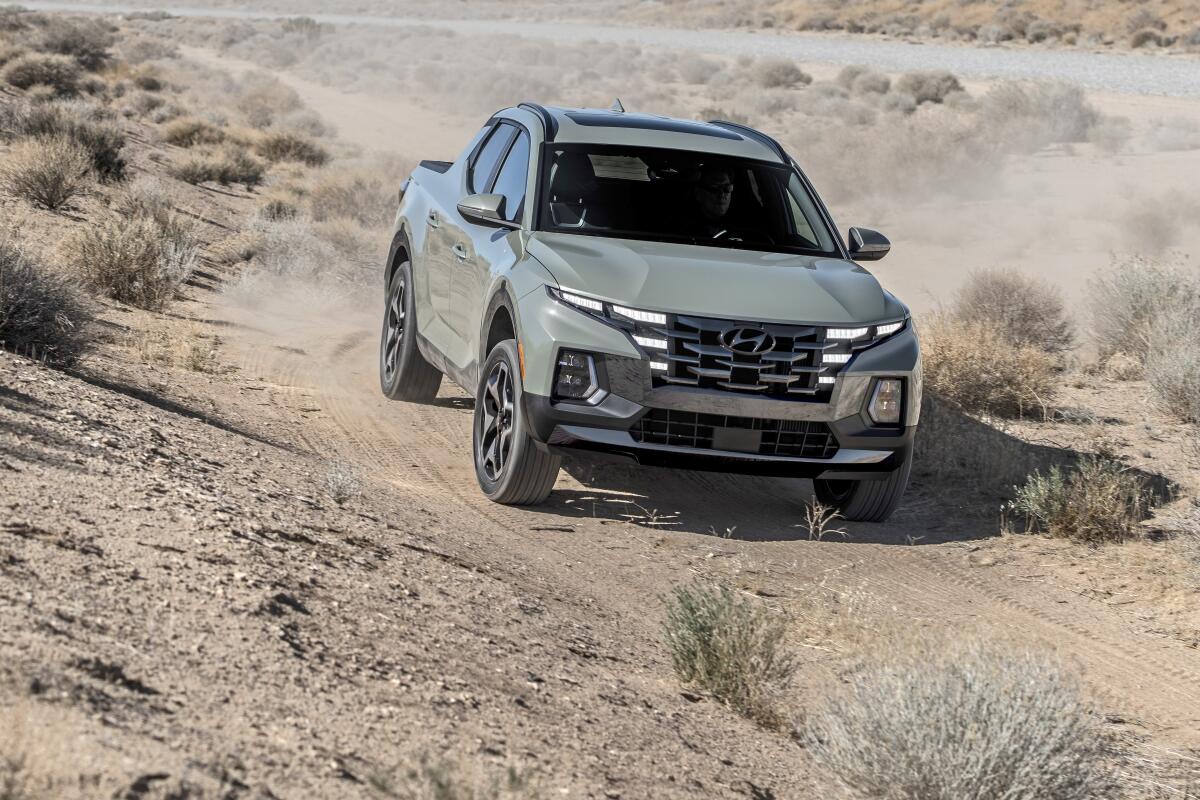
Hyundai’s Blue Stone and Sage Gray shades were dreamed up by Erin Kim, a creative manager at Hyundai Design North America. She said she took inspiration from nature, which felt especially resonant in a world contending with the COVID-19 pandemic. More than ever, she said, people are focused on “enjoying outdoor life.”
“We want our color palette to look good in the natural environment,” she said.
Indeed, consumers may want their vehicles not only to look good in, say, a wooded glen, but also to project the very idea that they care about wooded glens. Leatrice Eiseman, executive director of the Pantone Color Institute, traces the rise of muted, earthy shades to consumers’ growing environmental awareness.
“We are seeing social/political movements that are responding to this environmental concern and drawing much attention to using less artifice and moving to that which is perceived of as real and natural,” she said. These colors “help to depict that goal.”
Nature is a key inspirational concept over at Nissan too, whose vehicles now come in aluminum-flakeless shades Boulder Gray, Baja Storm and Tactical Green. But it’s a certain kind of nature.
“Not earthy natural. Earthy high tech,” explained Nissan Design America lead color and trim designer Moira Hill, drawing a connection between the car colors and the technical equipment that adventure-seekers might cram into their 4x4s for weekend jaunts in the mountains. If you’re packing, say, a $500 carbon fiber camp chair, why wouldn’t you want your car to match?
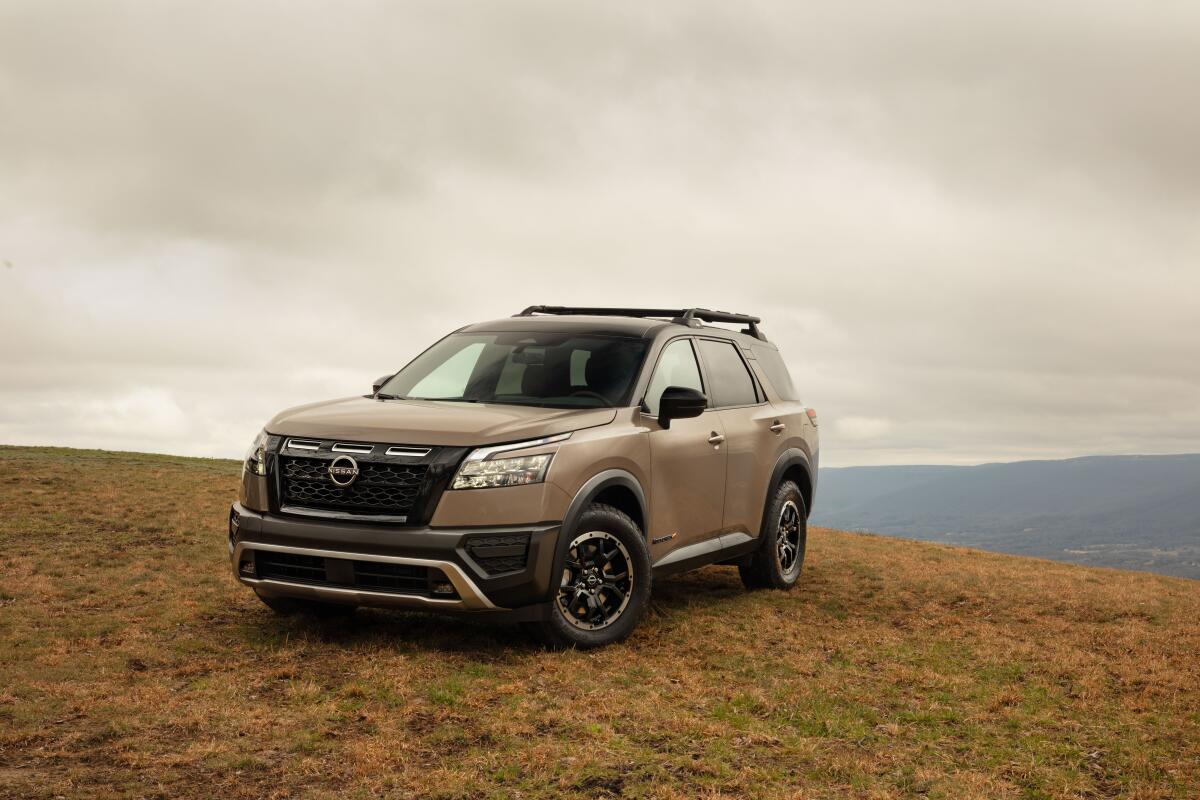
It’s not solely about projecting a sense of adventure. Boulder Gray paint, for example, offers a stealthy vibe when applied to Nissan’s Z sports car, Hill said. “It is understated and not flashy,” she said.
That these colors are appearing on sub-$30,000 vehicles such as the Nissan Kicks and Hyundai Santa Cruz is emblematic of the democratizing of dialed-down earth tones. Hues that once were available only on much pricier cars — the RS 7 had a base price of around $105,000 when it launched in Nardo Gray in 2013 — can now be had on much more accessible rides. Drury isn’t surprised.
“It’s like most things: They trickle down through the industry,” he said. “Whether it be performance or safety or infotainment, it will trickle down as long as there is receptivity.”
‘Just hip enough’
Car buyers may not necessarily be concerned with the philosophical underpinnings of these colors. Most interviewed for this report said they bought cars in these earthy, non-sparkly hues simply because they liked the look.
Car collector Spike Feresten, the host of the podcast “Spike’s Car Radio,” has owned two ultra-high-performance Porsche models — a 911 GT2 RS and 911 GT3 — painted in Chalk, a color the company introduced in 2016. Feresten called Chalk “understated but just hip enough.”
“I think people are choosing that because they are taking a baby step forward in car color choice risk,” he said. “They realize they’ve been in the big four — black, gray, white or silver — and they want to try to spice it up a little. So, they take a baby step into Chalk.”
Feresten regrets selling both vehicles. “I miss something Chalk,” he said.
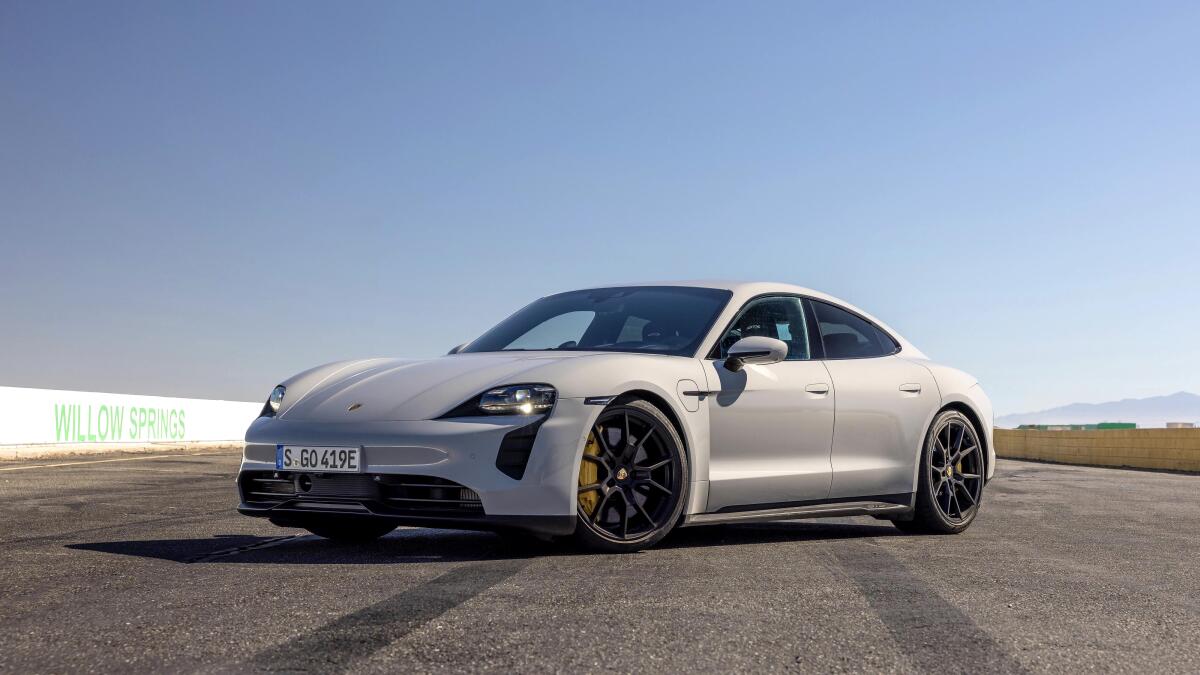
So, Feresten is eagerly awaiting his next Porsche done up in a nonmetallic paint: a 718 Cayman GT4 RS in Oslo Blue. It’s a historic color used by Porsche in the early 1960s on its famed 356 model. The hue, Feresten said, is offered via the company’s Paint to Sample program. Pre-approved colors start at about $11,000; fully customized shades go for about $23,000 and up.
As for Subkoff, while she loves her Porsche’s color (“It’s so chic”), she doesn’t like the car itself (“It’s not me”). She said she plans to get rid of the Panamera, and wants to replace it with a Jeep Wrangler 4xe, the company’s plug-in hybrid offering.
She already knows what sort of color it’ll be.
Muted. And earthy.
- Share via
Watch L.A. Times Today at 7 p.m. on Spectrum News 1 on Channel 1 or live stream on the Spectrum News App. Palos Verdes Peninsula and Orange County viewers can watch on Cox Systems on channel 99.
More to Read
Inside the business of entertainment
The Wide Shot brings you news, analysis and insights on everything from streaming wars to production — and what it all means for the future.
You may occasionally receive promotional content from the Los Angeles Times.

